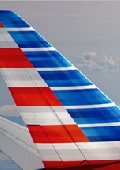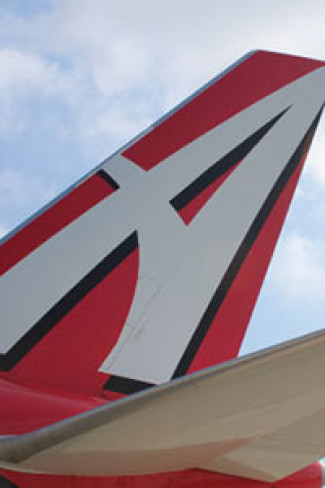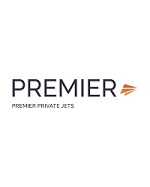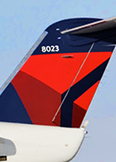Ground School 101 - Part Two
Your mind wraps itself around the images of you, strapped into that multimillion dollar flying machine, visibility at your destination down to nil, both engines belching violent rivers of smoke, the instruments a jack hammering blur of colors and dials, the plane shuddering and groaning. Your co-pilot, or sim partner, is passed out next to you from hypoxia and fear, and it's up to you to get this damaged bird full of frightened nuns and trembling Girl Scouts onto the ground safely.
The NDB needle whirls around with abandon, fluttering finally to a stop in the direction you know the airport lies. You configure the flaps and the gear, gritting you teeth as you force the gear handle down with all your might, knowing damn well that its is your own strength getting those wheels down as the hydraulics bled out just minutes ago. The NDB needle has swung back the other way, indicating that you are on the way down the chute, only seconds from greasing this wounded angel onto the snowy runway. The sparkling Rolex watch you bought for your new pilot job comes in handy as it counts down the seconds like they were slogging through tree sap. Only a few more seconds.
You are at the MDA, the time is right on, you know its there. Its GOT to be there.. And then, in the heat of battle you hear it. Muffled at first. You wipe the sweat off your fevered brow and press on, knowing the runway should be right there. The noise grows slowly, gaining a fevered pitch. Finally, the sounds of deep belly laughter break your concentration as the sim instructor shouts out Where the hell are you going? You went the wrong way on the NDB! With those deflating words the reverie is broken and you realize that, yes, indeed, you followed the outbound course in stead of the inbound. But that is what the sim and learning are all about. Welcome to the sim at Slingblade Airlines.
The first few days before the sim are typically spent learning profiles. These are the scripts that the company has diligently come up that both standardizes the flying and ensures the greatest margin of safety. These are best memorized to the point of insanity and beyond, able to be recalled under extreme stress and fatigue. They usually include calls and responses, the order of switches to be pushed, the flow of checklists to be read, and eventually the order of actions to be performed in the highly likely event of numerous emergencies in the sim. Your sim partner will be there, coaxing and cheering as the alien movements eventually become a tight flow that fosters confidence and makes the first few sim sessions a bit easier. Chair flying becomes the norm as practice approaches are run over ad nauseum, flows practiced and call outs are rehearsed. A drive to the supermarket becomes a practice flight with other drivers on the road staring curiously at you as your hands push imaginary buttons and practice flows as you approach your parking slot at Hooters for dinner.
The day finally comes and you shuffle into the sim bays. Large boxes wobble, duck and dive on spindly hydraulically charged legs, hissing and squeaking. The bridge comes down, not unlike a Star Wars scene, and the sim door opens. It's usually dark, as you are getting a cold airplane. You squeeze in, unpack your nest from your flight bag and gawk at the flight deck of your new home. The buttons and screens are in the same spot as the trainer you practiced in for hours at the simulator facility, only now that button you just pressed has lit up the overhead panel and is getting the APU on line. Usually at this point the smile that cracks across your face will be there for a while.
After a few hours of VFR flying to get you used to the sim, the instructor, sitting behind you like a phantom calling out procedures and making points, will up the stress level and start feeding some anomalies into the machine, which will spit them at you in a series of dings and flashing lights. Your time spent memorizing flows will come in handy as you start flailing away at buttons in response to checklists being read by your sim partner. A cool and calm response to these events will insure as favorable outcome as possible. As the cockpit grows smaller and you get more comfortable in it, the emergencies will grow in severity, testing your ability to remain calm and, above all, fly the plane. Finally, you will have had your allotted time in the sim, practiced numerous approaches in all types of weather, with 1 or 2 engines operating, in all configurations and will be signed off for your big chance to shine: the checkride.
This event is a test of your abilities and understanding of the airplane you will be flying passengers in. It usually consists of an oral exam, followed by a few hours in the sim with a few emergencies, a V1 cut, a few single engine approaches and some basic flying demonstrations. Anything blasted at you in the sim you will have trained for numerous times and should be well equipped to handle.
The very word checkride causes a deep rooted fear in many a pilot. It can actually be seen in two very distinct lights. It is either a culmination of your training and the last hoop you have to jump through to get into the skies, or a gut wrenching, fear inducing panic fest that prematurely grays your hair and leaves you with a pothole sized ulcer that will force you to eat antacids for the remaining years of your life. With the right attitude and thorough preparation, the ride will be a smooth flow of events that will pass quickly and successfully. You will make mistakes and these will be part of the overall scheme of things, which is to further your learning and make you the safest pilot you can be.
After your successful checkride and the receipt of your newly minted ticket, a few days off is usually in order. After that it is onto IOE and life as a junior FO. More on that next article.
-

Piedmont Airlines 10/16/2024
-

ABX Air 10/11/2024
-

Allegiant Air 09/25/2024
-

Premier Private Jets 09/25/2024
-

Endeavor Air 09/25/2024
 AIRLINE PILOT CENTRAL
AIRLINE PILOT CENTRAL